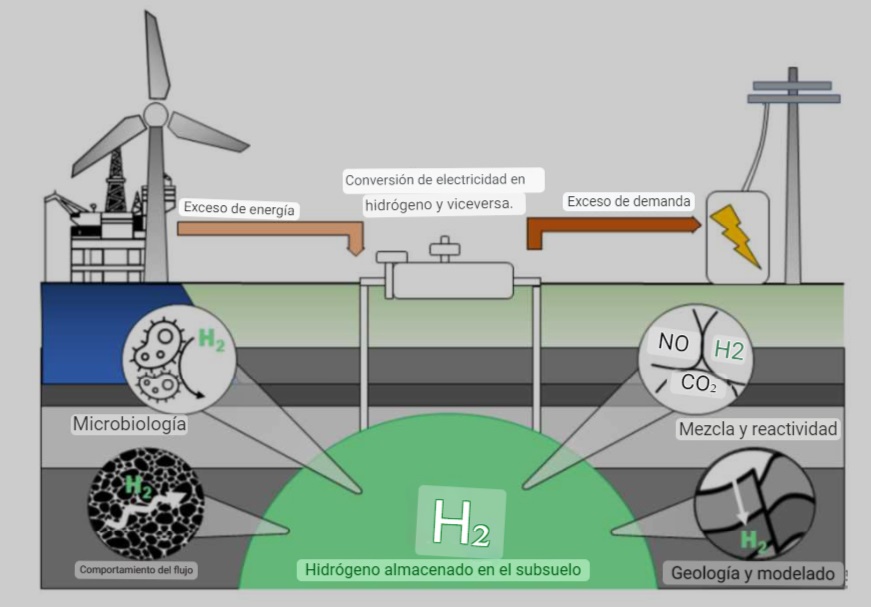Author: Inspector. José López, September 27, 2023.
Introduction
Hydrogen , often hailed as the “fuel of the future”, has gained increasing attention as a carrier of clean and versatile energy. Today, there is almost universal consensus that this element is one of the means by which a fully decarbonized future can be achieved.
However, it remains difficult to understand the full scope and dynamics of this transition. There is often little awareness of what elements of the value chain need to come together to connect hydrogen supply to a broader range of applications, where novel solutions are required to complement tried and tested technologies and which industry players will drive these transformations.
This article will analyze the innovations that are promoting the adoption of hydrogen as an energy source. From production and storage to transportation and application, technological advances are generating significant changes in various sectors and facilitating the transition towards a more sustainable energy landscape
Interest in this element as a wide-ranging and energetic solution has been the subject of research for decades. Experts from various fields have explored the production, transportation, storage and use of hydrogen to provide zero-emission energy services.
Recent technological advances in its production have made it more efficient and profitable. The cost of producing it from renewable electricity could fall by 30% by 2030 as a result of declining renewable energy costs and the development of new technologies.
Advances in hydrogen storage
The storage, distribution and transformation of energy using hydrogen is a critical challenge for the large-scale deployment of value chains. The relatively smaller number of IPFs (International Published Patent Families) in this field, compared to the production and applications of the element, masks different dynamics at a more granular technological level.
Established technologies, such as hydrogen storage and transportation pure, gaseous or liquid, generated two thirds of patenting activities between 2002 and 2020, with strong growth in the number of IPFs published during this period, denoting the high potential to link new hydrogen assets with production and applications with existing infrastructure.
The development of advanced materials , such as metal hybrids and porous structures, which allow greater storage capacity and controlled release of hydrogen. As well as improvements in compression and decompression systems, they are increasing efficiency and reducing associated costs.
Going for 100% renewable energy will not work without energy storage in which surplus electricity is used to produce hydrogen through electrolysis. Underground hydrogen storage offers us the possibility of storing energy underground on a very large scale 1 .

Innovations in liquid hydrogen storage
Global adoption of element storage and distribution technologies will expand as production and end-use sites increase. Underground storage facilities are being developed to hold large quantities and pipelines are being built to transport it to end users.
The development of more efficient cooling and thermal insulation systems, allowing storage at low temperature and high energy density.
The use of new cryogenic materials and evaporation control techniques to minimize losses during storage.
Hydrogen liquefaction and compression technologies:
Research and development of hydrogen liquefaction and compression technologies play a fundamental role in the expansion of the hydrogen economy.
Liquefaction, which allows it to be stored in liquid form, is achieved through the use of specialized cryogenic containers known as dewars (portable cylinders). These cylinders are designed to handle liquid hydrogen at extremely low temperatures of -253°C, ensuring no leaks. and preserving its purity.
Innovation in this area focuses on improving the efficiency of hydrogen liquefaction and compression, optimizing cylinder designs, developing advanced materials with exceptional cryogenic properties, and exploring new compression technologies that enable safer, more efficient storage.
Why the importance of storage?
Hydrogen storage is key to the advancement of hydrogen and fuel cell technologies in applications including stationary power, portable power and transportation. Additionally, it has the highest energy per mass of any fuel; However, its low density at room temperature results in low energy per unit volume, thus requiring the development of advanced storage methods that have potential for higher energy density.
Hydrogen can be physically stored as a gas or liquid. As a gas it normally requires high pressure tanks (tank pressure 350 to 700 bar (5,000 to 10,000 psi).
Its storage in liquid form requires cryogenic temperatures because the boiling point of hydrogen at a pressure of one atmosphere is -252.8 °C. It can also be stored on the surfaces of solids (by adsorption) or within solids (by absorption).
Likewise, it can allow renewable energies to provide an even greater contribution. It has the potential to help with the variable production of renewable energy, such as solar photovoltaic (PV) and wind, the availability of which is not always constant.
Conclusion
Technological advances in hydrogen production, materials and storage systems, its distribution, integration with renewable energies and high-density storage are making it a more practical and profitable energy source, which can help reduce emissions. greenhouse gas emissions and combat climate change.
References
1. https://www.norceresearch.no/en/news/bridging-the-gap-to-a-sustainable-future-underground-hydrogen-storage


